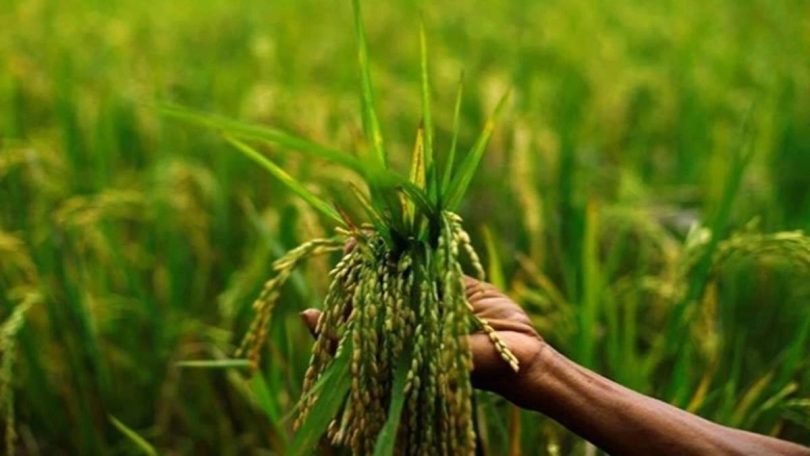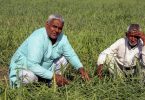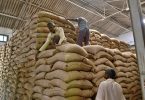[ad_1]
Agriculture in India since independence has taken giant strides. However, it continues to face age-old problems and the conditions of farmers have even though has improved a lot yet are far from the level we would like to see. However, agriculture in recent times is also in throes of a major change. Much of it is due to technological interventions, improved methods of cultivation, better agrochemicals and the use of IT. We discuss with Vimal Alawadhi, Managing Director, Best Agrolife Ltd. the milestones of Indian agriculture, the present challenges and the future direction as well as how digital technology could play a transformative role in adding momentum to this sector.
Q 1: India’s agricultural position at the time of independence was precarious but the country has made a long stride, how do you view these developments?
Agricultural development will always remain an integral part of our nation’s overall economic development. At the time of our Independence Indian economy was backward and agriculture-based. In fact, agriculture was the main occupation of around 76 percent of our working population at that time and contributed nearly 50 percent to the national income. However, it was also characterised by extremely low productivity per hectare and per worker. After 75 years of independence, the scenario has changed drastically as the share of the agriculture & allied sector in total GVA has declined from 50 percent to 18.8 percent in 2021-22. But even today more than 60 percent of the workforce is engaged in agriculture, and the growth of other sectors and the overall economy depends on the performance of agriculture to a great extent. Agriculture supplies raw materials to food processing industries, vanaspati industries, and agro-based industries like sugar, jute, and cotton textile. Therefore, the development of these industries is entirely dependent on agriculture.
Q 2: Even though Green Revolution was a big success but it also introduced what experts term as lop-sided development. Do you agree with this remark?
To some extent yes however we cannot deny that the green revolution was the need of the hour at that time. We all know that from independence to the early 1960s India depended on imported food items. Green Revolution introduced Indian farmers to modern methods of agriculture like better quality seeds, proper irrigation, tractors, new tillage and harvesting equipment, chemical fertilizers, and pesticides. This led to higher yields and improved quality of the food and fibre and helped India move from a ship-to-mouth system to the state of self-sufficiency.
However, in the pursuit of ensuring food security, we ignored the impact of large-scale use of pesticides and synthetic nitrogen fertilizers for improved irrigation projects and crop varieties on the environment. This would not have happened if we had invested more in educating farmers about the high risk associated with the intensive use of pesticides and spraying them without following instructions or precautions. Moreover, the crops introduced during the green revolution were water-intensive. As a result, not only the investment in irrigation increased but ground-level water also went down in the regions where these crops were grown.
As a way forward, we should first educate the farmers and make them more aware of the judicial use of chemicals and technologies. Above all, we need to come up with technologies that are more environmentally sustainable.
Q 3: Despite every effort agricultural sector continue to face challenges what are they?
Unlike developed countries, the Indian agricultural industry is operated by small farmers. Around 85% of India’s farmers operate on less than five acres of land and they struggle with debts, extreme poverty, and low quality of life. On top of that, the average productivity of many crops in India is quite low. The fact that India is expected to become the most populous nation in the next decade is more worrying because providing food for them will be a huge challenge. Low access to credit, the prominent role of unorganized creditors, lack of awareness regarding technology and mechanization, poor infrastructure for farming, dependence on weather, lack of marketing and supply chain suitable for high-value crops are some of the major concerns right now.
Q 4: How can we mitigate these challenges?
Education and awareness are the key solutions for most of these problems. Farmers can increase agricultural productivity and improve their incomes by adopting innovative technologies and practices. Technology can help them in the efficient management of inputs. Other than that increasing the understanding and learning to adapt to climate issues, offering them better quality products, and keeping the environment safe at the same time are some of the major efforts required.
On the other hand, the Government and other respective planners need to come up with right policies for farmers and agriculture-related industries by taking into considerations factors like small holdings of farmers, primary and secondary processing, supply chain, the infrastructure supporting the efficient use of resources and marketing, reducing intermediaries in the market in focus, and cost-effective and environment-friendly technologies are the need of the hour.
Even though after 2003 we have taken agricultural marketing reforms based on privatization, liberalization, and globalization which had affected the inputs market at a faster pace but that is not enough. We need aggressive progress in these sectors.
Q 5: Technological interventions are considered a panacea for the farming sector. How can it transform Indian agriculture?
Just like any other sector, technological interventions are gradually taking over the agriculture world too. India is entering into the fourth industrial revolution with a focus on digitization and automation. We can see huge investments in IoT (Internet of Things), smart logistics, Artificial Intelligence (AI), Kisan drones and Machine Learning (ML).
Instead of depending on manual labour, farmers can spray insecticides, pesticides and soil conditioners automatically and at time-specific intervals with drones. With drones, they can easily monitor yields through aerial photography. Parameters like soil quality, water levels, moisture, plant diseases and temperature can be read by IoT-enabled sensors to offer insights for farmers and act out interventions accordingly. Moreover, IoT sensors also enable strict environment checks like automatically regulating light brightness or even turning on water when required In closed farming spaces or better known as Controlled-Environment Agriculture (CEA).
As per statistics released by the United Nations, about 45% of food produced in India is lost because of inefficient supply chains. We can avoid this loss by investing in smart logistical infrastructure, that transports food with the least wastage.
Q 6: Agriculture and sustainability – how do you see the future, especially in the context of global warming, decreasing farming land space and growing population?
The challenge is real indeed! With population growth, land used for human settlements is also increasing day by day. Other than this, climate change and nature conservation are also affecting both crop yield and the land area suitable for agriculture. It is found that the total global arable land area is likely to decrease by 0.8–1.7% in the coming years. We can only tackle these challenges and enhance the Earth’s potential to produce food for years to come by adopting agricultural practices that are designed to protect the environment, reduce greenhouse gas emissions, enhance soil quality and fertility to protect future crop yields, and expand the Earth’s natural resource base.
[ad_2]
Source link







